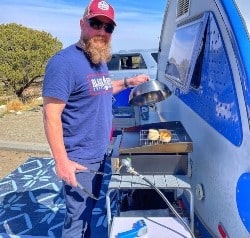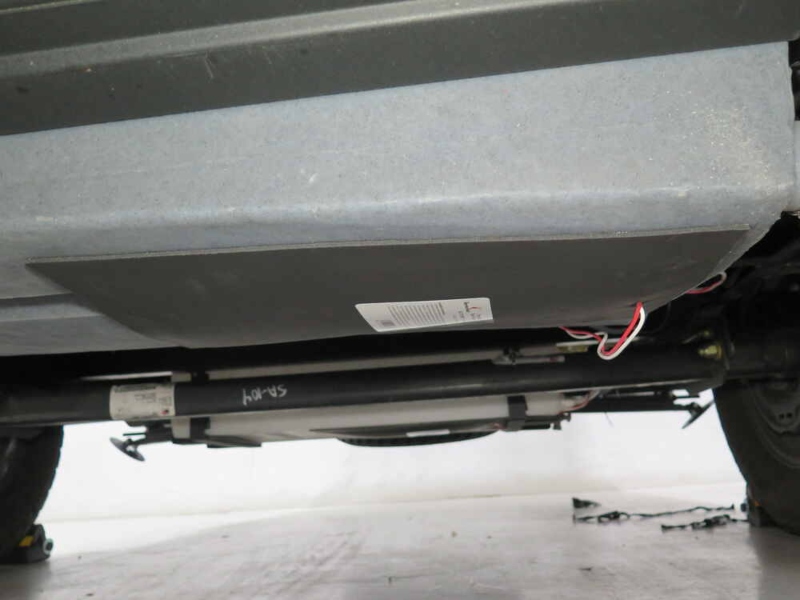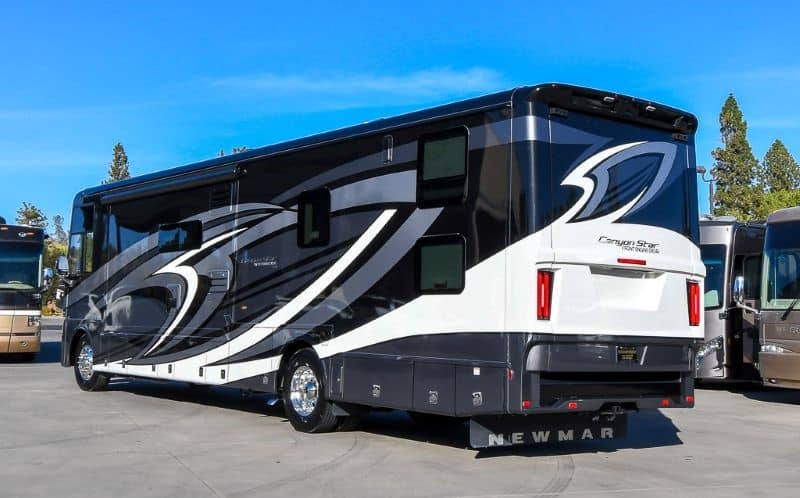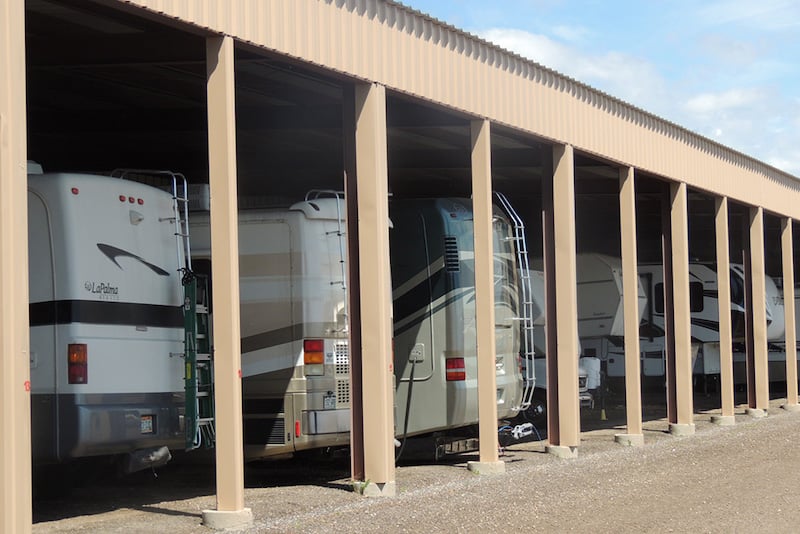If your RV is equipped with tank heaters, you have a great opportunity to travel when the weather gets colder. However, there is a lot of confusing information about when to turn on your RV tank heaters. There also seems to be a bit of confusion out there about how an RV tank heater works.
If the weather is turning cold, this is a great time to talk about when to turn on RV tank heaters. Follow along with us as we give you all you need to know about RV tank heaters. We discuss everything from when to use them to why your camper has them or not.
What Is an RV Tank Heater?
An RV tank heater is a warming pad attached to your motorhome’s holding tanks. These heating pads gently warm the tank. They keep your freshwater, gray water, or black water from freezing when the temperature drops.
Tank heaters keep the temperature of the tank just warm enough to keep the liquid contents from freezing. They attach to the exterior of the RV freshwater and wastewater tanks, essentially acting like the heating pad you use for your sore muscles or back.
Do All RVs Have Tank Heaters?
Not all RVs come with tank heaters. And you may not need tank heaters depending on when you camp and the type of rig you own.
Many entry-level motorhomes and travel trailers do not come standard with RV tank heaters. They can often be added as an optional feature, however. If you are planning on winter camping or prefer to travel when crowds are smaller, adding tank heaters is a smart idea.
Will RV Holding Tanks Freeze without Heaters?
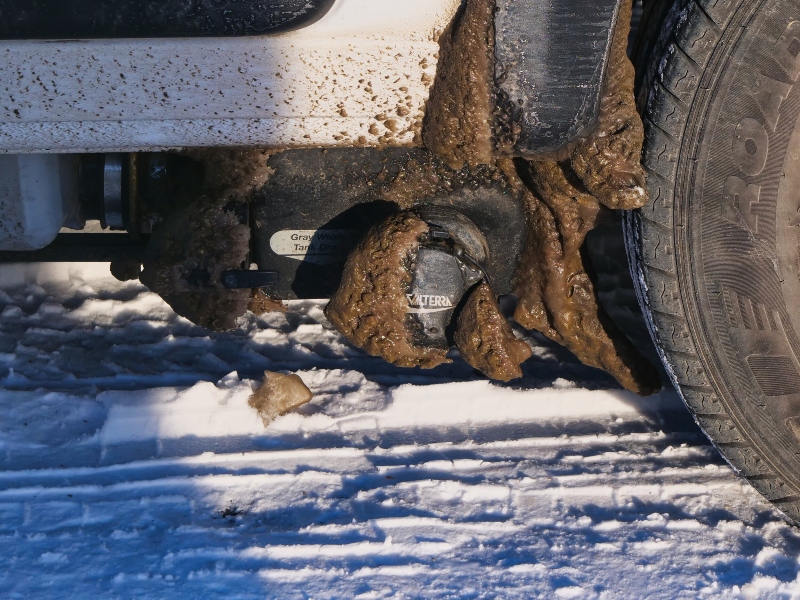
Whether your motorhome holding tanks will freeze without tank heaters depends on how you are using your RV when the weather gets cold. If you are traveling during the winter to locations that have freezing temperatures, there is a good chance your holding tanks will freeze without heaters.
Some travel trailers have the ability to circulate the furnace’s heat throughout the underbelly due to the bottom being sealed. Unfortunately, motorhomes have to keep the underside open due to various automotive components.
Even if your holding tanks are located inside your camper, without consistent heat, the risk of freezing is good.
When Should You Turn on Your RV Tank Heater?
There is quite a bit of debate on when to turn on RV tank heaters. Some RVers think you can wait until you’ve had a few nights of below-freezing temperatures. However, the general consensus between RV manufacturers and experts will tell you that it is wise to turn on your heaters much sooner than this.
We recommend turning on your heaters when the temperature drops around 40°F (4.5°C). This may seem like a warm temperature. However, when the daytime temperature is around 40°F, the nighttime temperatures are likely much lower.
Is It Safe to Leave RV Tank Heaters on All the Time?
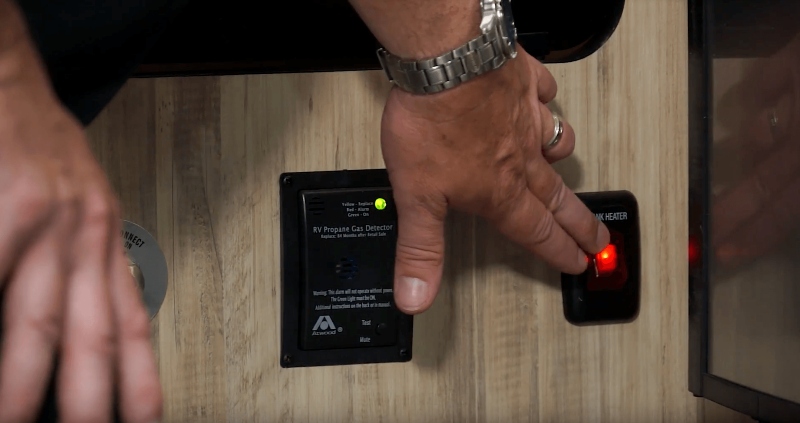
When you turn on your RV tank heater, it can stay on all the time. Most RV tank heaters will cycle on and off according to the temperature of the tank. This feature allows you to keep the switch inside your RV set to “on” without worrying about damaging your RV holding tanks.
There are two situations where you should turn off your tank heater. First, leaving your tank heaters on is unsafe when the tanks are empty. Second, you can turn off your tank heaters when the temperatures are consistently above 65°F (18.3°C).
How Long Can You Leave a Tank Heater On?
Your tank heater is a feature that can be left on for as long as necessary when the temperatures are below freezing. The thermostat controls of most tank heaters keep them from getting too hot or cold. If you are winter camping, it is a good idea to leave the tank heater switches in the on position all the time.
How Hot Do RV Tank Heaters Get?
Depending on the brand of tank heater installed in your RV, there may be a bit of variation in the temperature range. Typically, tank heaters will start warming when the tank or ambient temperature reaches around 40°F.
They will then heat until the tank temperature is around 65°F. Tank heaters for larger tanks may have higher temperatures. This allows for more efficient warming of larger volumes of liquid.
Does an RV Tank Heater Run on Propane or Electric?
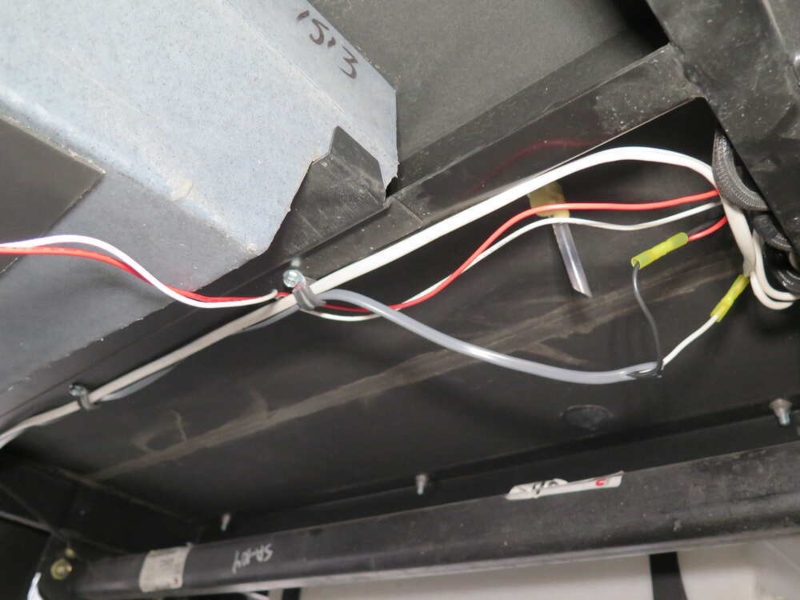
All tank heaters, no matter the brand, run on electricity. These low-voltage warmers tie into the electrical system of your RV. They can run using the DC power from the RV’s house battery. They also can utilize AC power from shore power plugs at campgrounds or your home.
Will a Tank Heater Drain Your Fuel Source?
No, a tank heater will not drain your fuel source. Because they are tied to the electrical system of your motorhome, tank heaters do not use propane or diesel. However, if you are off-grid utilizing your battery, tank heaters can drain your RV’s house battery.
It’s a good idea to have a way to charge your RV battery if you are winter boondocking, hunting, or ice fishing. Using an RV generator will keep your house batteries charged up.
RV tank heaters don’t use a lot of amperage, so your motorhome’s batteries should stay powered up if you use a solar power system. For more info, check out our article called How Long Will an RV Battery Last?
What Are the Best RV Tank Heating Pads?
If you are ready to add tank heaters to your RV, here are our suggestions for some of the best RV tank heating pads.
1. RecPro RV Tank Heater Pads
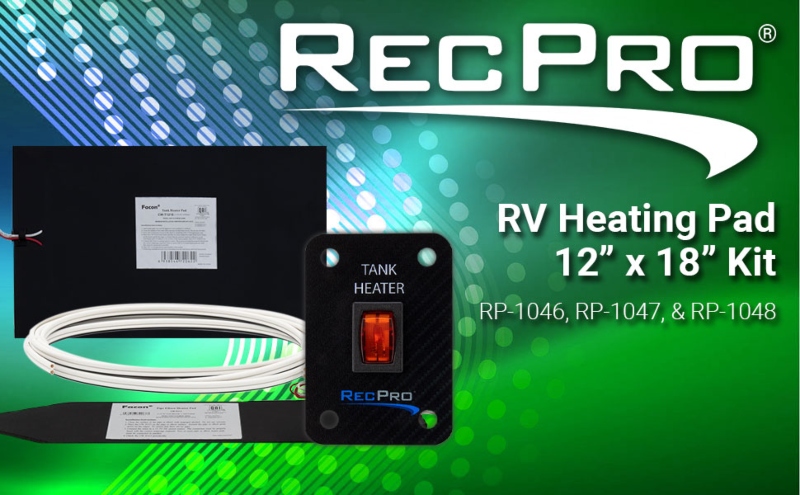
The RecPro RV Tank Heater Pads are great if you are winter camping and need to add heaters to your tanks. The RecPro comes as a set of three pads, one for each of your holding tanks. These pads have thermostatic control built into the pad.
This set of tank heater pads comes with labeled toggle switches that are perfect for installing in a camper that doesn’t already have tank heaters.
We like these pads because they have a higher activation temperature (45°F). This gives a bit of added peace of mind when temperatures dip well below freezing.
2. Facon CW-T1218 Tank Heater Pad
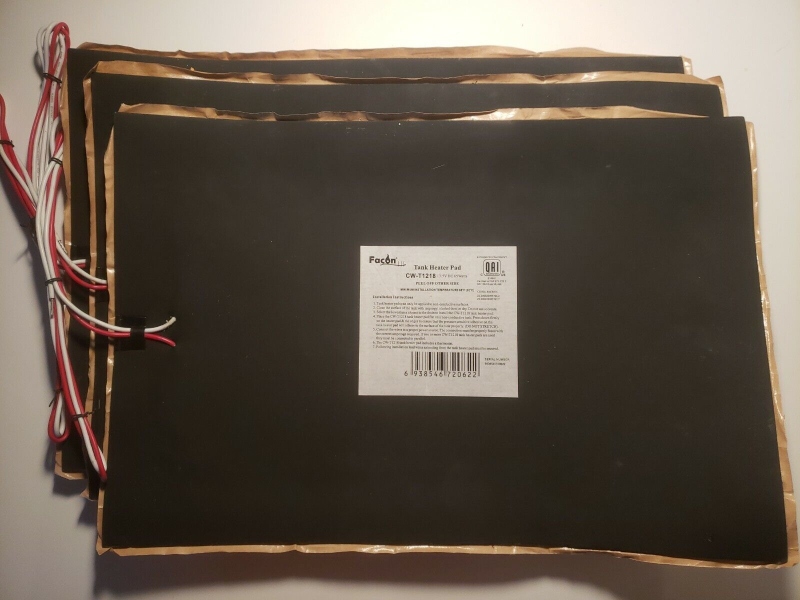
The Facon CW-T1218 Tank Heater Pads are a nice option whether you are replacing or adding new RV tank heaters. This two-pack of heaters comes with included adhesive for easily attaching to your freshwater or waste tanks.
If tank heaters are a new addition to your camper, the Facon comes with a thermostatic switch. Choose the option without the thermostatic switch if you are replacing existing heaters.
These pads reach a maximum temperature of 113°F (45°C), so they are great for tanks up to 50 gallons.
3. H&G Lifestyles RV Holding Tank Heater Pad
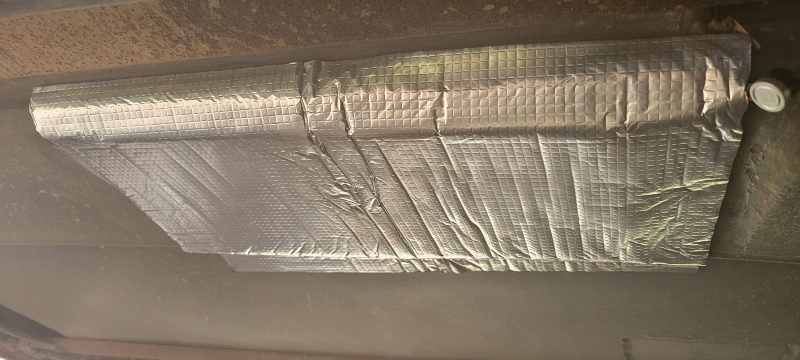
The H&G Lifestyles Holding Tank Heater Pad is perfect if you are replacing old tank heaters. This tank heater does not require a separate thermostatic switch since it is incorporated into the pad.
These pads are good down to -20°F (-29°C) and will warm to an ambient temperature of 50°F (10°C). The two-wire design connects easily to your camper’s existing on/off switch.
4. Maichis Holding Tank Heater Pads
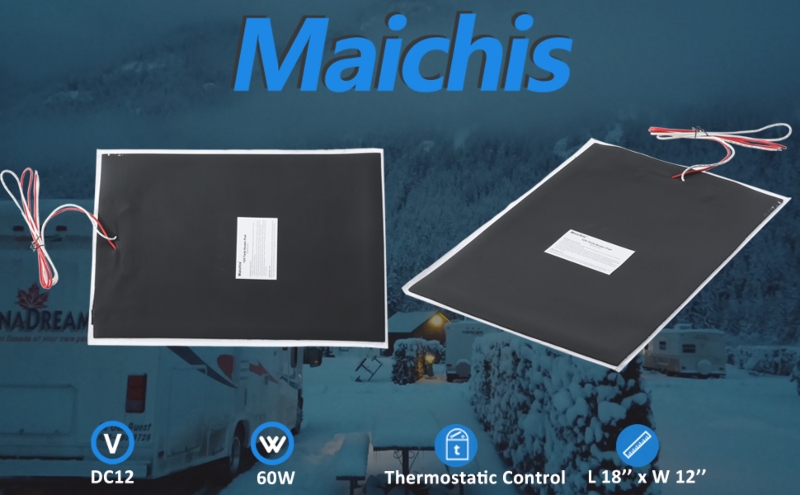
The Maichis Holding Tank Heater Pads are a good, affordable option for replacing or adding tank heaters. This tank heater brand offers multiple package options, from a single heater pad to six pads.
These heater pads have internal thermostatic controls and wire easily to existing switches in your RV. You must invest in toggle switches if you add these to an RV without existing tank heaters.
How to Install RV Tank Heating Pads
RV tank heating pads are actually very easy to install. Here are the basic steps for installing a tank heating pad.
1. Read The Instructions First
Carefully read the installation instructions provided with the tank heater pads.
2. Unplug Your RV and Disconnect Your Batteries
Ensure that your motorhome is completely disconnected from all sources of electricity. This includes shore power, your house, and engine batteries.
3. Install the Heating Pad Switch Panel and Wiring On Your RV
If your motorhome does not already have switches for your tank heater, you will need to run a line from the circuit panel to a new switch panel.
Disconnect the old heating pad wiring if your RV has an existing switch panel.
4. Clean the Exterior of the Holding Tanks
Locate your holding tanks. If your tanks have existing heating pads, remove them before installing the new ones.
Clean the surface of the tank where the new tank heating pads will be placed.
5. Place the New Tank Heating Pads on Your RV Holding Tanks
Remove the backing from the adhesive side and press the heater pad to the surface of the tank. Do this for all three of your holding tanks.
6. Run the Wiring to the Correct Switch On the Control Panel
For each tank, run the wiring to the properly labeled toggle switch. Connect the red wire to the positive pole. Connect the white wire to the negative pole.
If you have existing wiring from previous heating pads, replacing them with new wires is always preferable. The old wiring may have corrosion or other concerns. With fresh wiring, you know the wires are good.
7. Reconnect the Electricity and Test the RV Holding Tank Pads
Before you close up access to the tanks and the circuit panel, reconnect the batteries and plug your motorhome back into the shore power post (if applicable).
Turn on the heaters and check that they are working. You should feel the heat coming from the pads after they warm up. If they work fine, turn off the heaters until you need them.
3 Other Tips to Prevent Freezing RV Tanks
RV heaters are not the only way to keep your RV holding tanks from freezing. You can take other steps to keep holding tanks and piping warm, even if you have tank heaters.
1. RV Skirting
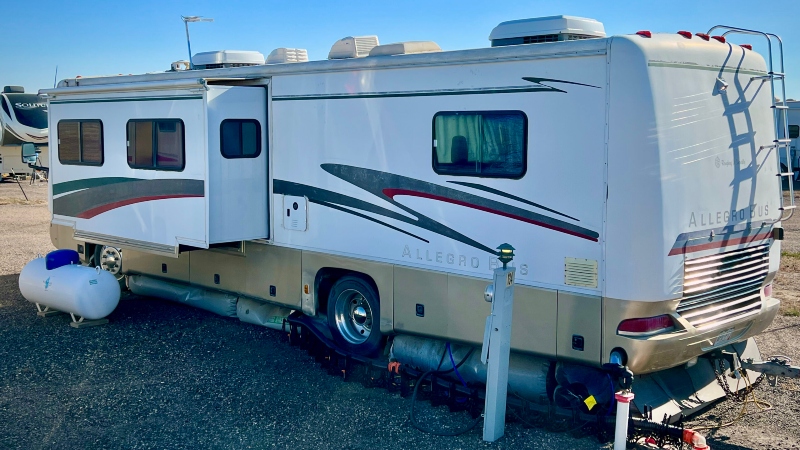
RV skirting is a smart idea if you are leaving your RV parked in one place for an extended period. Skirting creates a barrier around the base of the motorhome.
RV skirting keeps cold breezes from passing under your camper. This keeps your tanks and pipes warmer. Skirting also keeps the inside of your camper warmer.
Check out our article on RVBlogger.com called AirSkirt Inflatable RV Skirting for Winter and Summer to learn more about this fantastic skirting system. Don’t forget to use our coupon code RVBlogger to save $100!
2. Antifreeze
Some people will put antifreeze in their black and gray water tanks during the winter when they are camping to prevent freezing. This allows you to skip the tank heater for your black and gray tanks.
However, antifreeze should never be added to your freshwater tank if you are out camping. If you use antifreeze in your freshwater tank when storing your camper, make sure that you completely drain the tank of the antifreeze. Then rinse very thoroughly before filling it with water for drinking.
3. Insulate Pipes and Hoses
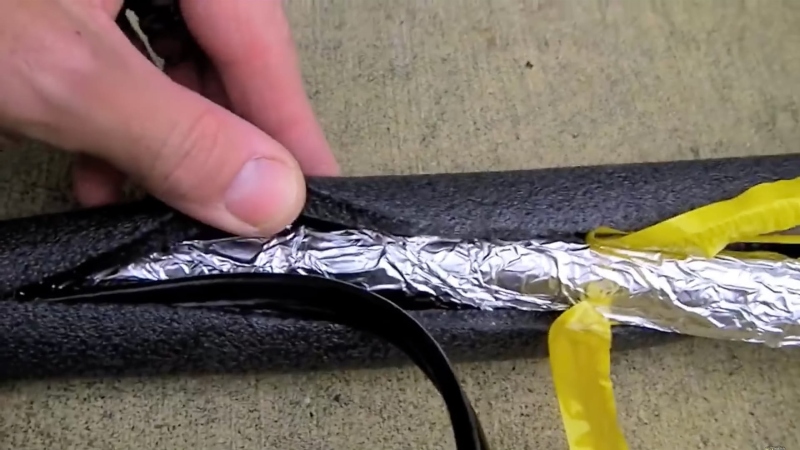
Insulating pipes and hoses will add additional protection for your camper in the winter. Just because your tanks are heated doesn’t mean the piping for your camper will stay just as warm. Pipe and hose insulation will keep water in your pipes warmer and prevent pipes from bursting.
Final Thoughts on RV Tank Heaters
RV tank heaters are a great feature for those who love early spring, late fall, or winter camping. However, it may not always be clear when to turn on your RV tank heaters. They are an easy and efficient way to protect your motorhome’s holding tanks.
Whether your motorhome has tank heaters or you’ve just installed them on your RV, tank heaters are a great addition. They provide a bit of comfort and peace of mind. They also allow you to extend your camping fun or enjoy some great winter or early/late season activities.
About the Author:
Jason Gass is a full-time freelance writer and part-time RVer whose goal is to share great stories around a campfire with good friends.
When he’s not working, he spends most of his time camping, searching for the best breweries, and road-tripping in his teardrop trailer with his wife, daughter, and two dogs.
